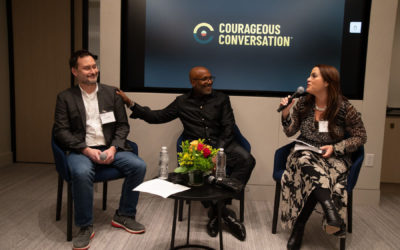By Hilary Hurd Anyaso—July 8, 2019
Stereotypes often guide our perceptions of members of social groups. However, research has yet to document what stereotypes may exist for the fastest growing youth demographic in the U.S. — biracial individuals.
Are biracial Black-White individuals perceived to be more similar to Black people or White people? And when people stereotype biracial Black-White individuals, do they stereotype them more like Black people or more like White people?
A new Northwestern University study has found evidence that there are some stereotypes that seem to be universally applied to biracial groups in the U.S.
“When people think of biracial individuals, regardless of their specific racial background, they tend to stereotype them as being attractive or beautiful,” said Sylvia Perry, co-lead author of the study and assistant professor of psychology in the Weinberg College of Arts and Sciences at Northwestern. “We also found that biracial individuals tend to be stereotyped as not fitting in or belonging, suggesting that, because they represent a mixture of two racial groups, people perceive that they do not really belong in either racial group.”
When the researchers began the study, they thought, for example, Black-White biracial people might just be attributed some of the same stereotypes that are attributed to White people and some of the same stereotypes that are attributed to Black people.
“A lot of the stereotypes of Black-White biracial people were completely different from the ones people have about White people and Black people,” Perry said. “This suggests that people might actually think of biracial people as their own racial group, rather than just a combination of their parents’ racial groups.”
To more fully understand the stereotypes that people hold about biracial people, the researchers asked about six different biracial groups: biracial Black/White individuals; biracial Asian/White individuals; biracial Black/Hispanic individuals; biracial Black/Asian individuals; biracial Hispanic/Asian individuals; and biracial Hispanic/White individuals. They also examined the extent to which having personal contact with biracial individuals is related to how they are stereotyped.
“When we looked at whether biracial people were stereotyped as being more similar to one of their parent’s racial groups than the other, we did not find any systematic patterns,” Perry said. “Black-White biracial individuals were seen as equally similar to White people and Black people, Hispanic-Asian biracial people were seen as equally similar to Hispanic people and Asian people, and so on.
“And it did not matter whether people had had a lot of personal contact with that specific biracial group or no personal contact with that biracial group — either way, biracial individuals were generally seen to be an equal mixture of their parents’ racial groups.”
A finding that came as a surprise to the researchers.
“When we think about how people in the U.S. racially categorize biracial individuals, we often see that biracial Black-White individuals, for example, people like President Barack Obama, tend to be categorized as Black,” Perry added. “So we thought that people might also stereotype biracial Black-White individuals more in line with the stereotypes of Black people in the U.S. But our findings indicate that overall that is not the case.”
Read more at Northwestern Now.




